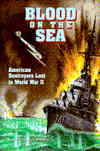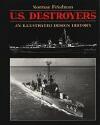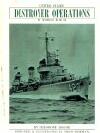| Navy | The US Navy |
| Type | Destroyer |
| Class | Clemson |
| Pennant | DD 227 |
| Built by | William Cramp and Sons (Philadelphia, Pennsylvania, U.S.A.) |
| Ordered | |
| Laid down | 23 Oct 1919 |
| Launched | 3 Aug 1920 |
| Commissioned | 15 Dec 1920 |
| Lost | 1 Mar 1942 |
| Loss position | 14° 30'S, 106° 30'E |
| History | USS Pillsbury (Lt.Cdr. Harold Clay Pound, USN) was sunk on the 1st of March, 1942 in position 14º30'S, 106º30'E when she ran into a major Japanese task force, consisting 4 battleships and 5 cruisers and several destroyers, purposely deployed to interdict any Allied fleet activity and flee escape attempts from Java. There were no survivors. USS Pillsbury received 2 Battle Stars for her services. |
Commands listed for USS Pillsbury (i) (DD 227)
Please note that we're still working on this section
and that we only list Commanding Officers for the duration of the Second World War.
| Commander | From | To | |
| 1 | Lt.Cdr. Arthur Ainslie Ageton, USN | 18 Apr 1939 | 31 Jul 1940 |
| 2 | Lt.Cdr. Harold Clay Pound, USN | 31 Jul 1940 | 1 Mar 1942 (+) |
You can help improve our commands section
Click here to Submit events/comments/updates for this vessel.
Please use this if you spot mistakes or want to improve this ships page.
Notable events involving Pillsbury (i) include:
9 Feb 1942
Around 0800 hours, HrMs De Ruyter (Cdr. E.E.B. Lacomblé, RNN and flagship of Rear-Admiral K.W.F.M. Doorman, RNN) and HrMs Tromp (Cdr. J.B. de Meester, RNN), were joined by eight US destroyers USS Whipple (Lt.Cdr. E.S. Karpe, USN), USS Pillsbury (Lt.Cdr. H.C. Pound, USN), USS Edsall (Lt.Cdr. J.J. Nix, USN), USS Alden (Lt.Cdr. L.E. Coley, USN), USS Stewart (Lt.Cdr. H.P. Smith, USN), USS John D. Edwards (Lt.Cdr. H.E. Eccles, USN), USS Barker (Lt.Cdr. A.J. Miller, USN) and USS Bulmer (Lt.Cdr. D.A. Harris, USN).
At 1700 hours the Dutch destroyers HrMs Piet Hein (Lt.Cdr. J.M.L.I. Chompff, RNN), HrMs Banckert (Lt.Cdr. L.J. Goslings, RNN) and HrMs Van Ghent (Lt.Cdr. P. Schotel, RNN) also joined. Van Ghent developed engine trouble and was later replaced by HrMs Kortenaer (Lt.Cdr. A. Kroese, RNN). (After repairs Van Ghent re-joined the task force on the 11th.)
Around 2130 hours the US destroyers USS Edsall and USS Alden were detached and sent to Tjilatjap. (1)
14 Feb 1942
Around 1600 hours, an Allied task force, now made up of five cruisers; the Dutch light cruisers HrMs De Ruyter (Cdr. E.E.B. Lacomblé, RNN and flagship of Rear-Admiral K.W.F.M. Doorman, RNN), HrMs Java (Capt. P.B.M van Straelen, RNN), HrMs Tromp (Cdr. J.B. de Meester, RNN), the British heavy cruiser HMS Exeter (Capt. O.L. Gordon, MVO, RN) and the Australian light cruiser HMAS Hobart (Capt. H.L. Howden, CBE, RAN). They were escorted by a total of ten destroyers, four Dutch and six American; HrMs Van Ghent (Lt.Cdr. P. Schotel, RNN), HrMs Kortenaer (Lt.Cdr. A. Kroese, RNN), HrMs Piet Hein (Lt.Cdr. J.M.L.I. Chompff, RNN), HrMs Banckert (Lt.Cdr. L.J. Goslings, RNN), USS Stewart (Lt.Cdr. H.P. Smith, USN), USS John D. Edwards (Lt.Cdr. H.E. Eccles, USN), USS Barker (Lt.Cdr. A.J. Miller, USN), USS Bulmer (Lt.Cdr. D.A. Harris, USN), USS Pillsbury (Lt.Cdr. H.C. Pound, USN) and USS Parrott (Lt.Cdr. J.N. Hughes, USN) depared Oosthaven (Bandar Lampung), Sumatra for a hit and run raid to the north of the Gaspar Straits to attack a reported Japanese convoy. (1)
14 Feb 1942
Around 1300GH/14, the destroyers USS Stewart (Lt.Cdr. H.P. Smith, USN), USS John D. Edwards (Lt.Cdr. H.E. Eccles, USN), USS Barker (Lt.Cdr. A.J. Miller, USN) and USS Bulmer (Lt.Cdr. D.A. Harris, USN), USS Pillsbury (Lt.Cdr. H.C. Pound, USN) and USS Parrott (Lt.Cdr. J.N. Hughes, USN) arrived at Oosthaven to join the Allied Striking Force. (2)
15 Feb 1942
Around 0315GH/15, the Allied Striking Force entered the Stolze Strait (to the east of Mendanau Island (Pulau Mendanau). The task force was clear of the strait around 0800GH/15 but not before the Dutch destroyer HrMs Van Ghent (Lt.Cdr. P. Schotel, RNN) had hit a reef around 0500GH/15 resulting in the loss of this vessel. The Dutch destroyer HrMs Banckert (Lt.Cdr. L.J. Goslings, RNN) remained behind to render assistance to her stranded sister but it was soon apparent that the ship was beyond salvage. Several valuable items of the equipment were however taken off and by 1700 hours the wreck of HrMs Van Ghent was destroyed by HrMs Banckert. The Banckert now made off for Surabaya with the crew of the Van Ghent on board.
Meanwhile around 1150GH/15, the first Japanese air attack on the remainder of the Allied Striking Force started. The attacks, which came in five waves, lasted until about 1745GH/15. No major damage was done to the Allied ships which had reversed course shortly after 1300GH/15. The Australian light cruiser HMAS Hobart reported some minor damage, mostly from splinters and the US destroyers USS Barker (Lt.Cdr. A.J. Miller, USN) and USS Bulmer (Lt.Cdr. D.A. Harris, USN) required repairs to their badly shaken up machinery spaces due to near misses.
The task force was then split up with HrMs De Ruyter (Cdr. E.E.B. Lacomblé, RNN and flagship of Rear-Admiral K.W.F.M. Doorman, RNN), HrMs Tromp (Cdr. J.B. de Meester, RNN), HMS Exeter (Capt. O.L. Gordon, MVO, RN), HMAS Hobart and the destroyers USS Barker and USS Bulmer proceeding to Batavia to refuel. HrMs Java (Capt. P.B.M van Straelen, RNN) and the remaining US destroyers (USS Stewart (Lt.Cdr. H.P. Smith, USN), USS John D. Edwards (Lt.Cdr. H.E. Eccles, USN), USS Pillsbury (Lt.Cdr. H.C. Pound, USN) and USS Parrott (Lt.Cdr. J.N. Hughes, USN)) proceeded to the Ratai Bay to refuel and the two remaining Dutch destroyers (HrMs Kortenaer (Lt.Cdr. A. Kroese, RNN) and HrMs Piet Hein (Lt.Cdr. J.M.L.I. Chompff, RNN)) to Oosthaven to do the same. (1)
19 Feb 1942
Battle of Badoeng Strait
It was expected that the Japanese would soon land (night of 19/20 February 1942) on the south-east coast of Bali (Badoeng Strait). Rear-Admiral Doorman therefore wanted to attack them in three waves. The first wave came from Tjilatjap on the south coast of Java and consisted of the Dutch light cruisers HrMs De Ruyter (Cdr. E.E.B. Lacomblé, RNN and flagship of Rear-Admiral K.W.F.M. Doorman, RNN) and HrMs Java (Capt. P.B.M van Straelen, RNN), escorted by the Dutch destroyers HrMs Piet Hein (Lt.Cdr. J.M.L.I. Chompff, RNN) and HrMs Kortenaer (Lt.Cdr. A. Kroese, RNN) as well as the US destroyers USS John D. Ford (Lt.Cdr. J.E. Cooper, USN) and USS Pope (Lt.Cdr. W.C. Blinn, USN). However while leaving Tjilatjap in the evening of the 18th the Dutch destroyer Kortenaer grounded and was only able to get of at high tide therefore was no longer part of this force.
The second wave was made up of the Dutch light cruiser HrMs Tromp (Cdr. J.B. de Meester, RNN) and four US destroyers; USS Stewart (Lt.Cdr. H.P. Smith, USN), USS Parrott (Lt.Cdr. J.N. Hughes, USN), USS Pillsbury (Lt.Cdr. H.C. Pound, USN) and USS John D. Edwards (Lt.Cdr. H.E. Eccles, USN). They sailed from Surabaya in the afternoon of the 19th
Finally the third wave was made up of the Dutch Motor Torpedo Boats; HrMs TM-4 (Lt. J.E. Gobée, RNN), HrMs TM-5 (S.Lt. E.J. Hoeksel, RNN), HrMs TM-6 (S.Lt. P. van Rees, RNN), HrMs TM-8 (Lt. J.G. Treffers, RNN), HrMs TM-9 (Lt. J.A. van Beusekom, RNN), HrMs TM-10 (S.Lt. J.W. Boon, RNN(R)), HrMs TM-11 (S.Lt. A.A.F. Schmitz, RNN), HrMs TM-15 (Lt. H.C. Jorissen, RNN). HrMs TM-13 (?) was also part of this force but acted as 'rescue boat'. Shortly after their sailing from Surabaya in the evening of the 18th HrMs TM-6 was forced to return due to engine trouble. These Motor Torpedo Boats proceeded through Strait Bali and anchored in three bay's on the Java side to refuel which took the whole day. In the evening of the 19th they departed for Badoeng Strait.
The Japanese attack on Bali was carried out by two transport ships Sasako Maru (7180 GRT, built 1941) and Sagami Maru (7189 GRT, built 1940). They had on board part of the Imperial Japanese Army’s 48th Infantry Division and had departed Makassar for Bali during the night of 17/18 February. They were escorted by four destroyers; Asashio (Lt.Cdr. G. Yoshii), Oshio (Cdr. K. Kikkawa) Arashio (Cdr. H. Kuboki) and Michishio (Lt.Cdr. M. Ogura). Distant cover was provided by the light cruiser Nagara (Capt T. Naoi, flagship of Rear-Admiral K. Kubo) escorted by three destroyers Hatsushimo (Lt.Cdr. S. Kohama), Nenohi (Lt.Cdr. T. Chihagi) and Wakaba (Lt.Cdr. M. Kuroki).
The Japanese landed around 0200/19 on the south coast of Bali. The transports were attacked unsuccessfully by the American submarine USS Seawolf. Seawolf herself was then counter attacked with depth charges by the destroyers but managed to escape.
During the day the Japanese transports were attacked from the air and the Sagami Maru was damaged. She left the landing zone escorted by the destroyers Arashio and Michishio. The undamaged Sasako Maru remained in the landing zone to pick up the landing barges. The destroyers Asashio and Oshio remained with her.
The allied first attack wave arrived south of Bali around 2130/19. A line was then formed in the order, HrMs De Ruyter, HrMs Java, HrMs Piet Hein, USS John D. Ford and finally USS Pope. Speed was increaded to 27 knots and they proceeded up Badoeng Strait. Around 2230 hours HrMs De Ruyter and HrMs Java opened fire on the Japanese which were taken by surprise. The Asashio turned a searchlight on which was quickly taken out by a salvo from the Java. The Dutch cruisers claimed heavy damage on the enemy but according to Japanese reports on the battle damage was only minor and after being initially taken by surprise the Japanese soon counter attacked. By that time however the Dutch cruisers had moved on.
The Allied destroyers were further behind the cruisers then intended and now arrived on the scene. Piet Hein was a little ahead of the US destroyers and opened fire with her 4.7” guns and also fired two torpedoes. Shortly afterwards two more torpedoes were fired but none found their intended target. Piet Hein then turned around towards the US destroyers with the intention to attack the Japanese again. While doing so her smoke generator was started. It is not completely clear but it is possible that one of these US destroyers then engaged Piet Hein with gunfire thinking she was Japanese. It is also possible that it were the Japanese that engaged Piet Hein. At this time Piet Hein was hit several times, resulting in her to come to a stop. After about 15 minutes Piet Hein was illuminated by a Japanese searchlight and taken under fire. The crew was ordered to abandon the doomed destroyer and she soon sank.
USS John D. Ford and Pope sighted a Japanese transport vessel (this must have been the Sasaga Maru) and what they thought to be a Japanese cruiser but this must have been the destroyer Oshio. They launched torpedoes (Ford – three, Pope - five) and turned away. Asashio and Oshio when went after them. The Americans thought they faced a very powerful enemy, even heavy cruisers were thought to be present. Both destroyers then retired to the south-east to return to Tjilatjap. Shortly afterwards they heard gunfire. This gunfire was coming from both Japanese destroyer that were now engaging each other by mistake. After a few minutes the mistake was noticed and both Japanese destroyer retired up the Strait to the north.
Meanwhile the Allied second attack wave was nearing the scene of the action. They had arrived south of Bali around 0100/20. The four US destroyers were ahead of the Tromp. It was intended that the four US destroyer would enter Badoeng Strait and attack with torpedoes first and that the Tromp would come behind them to finish off the Japanese after the confusion of the torpedo attack. During the torpedo attack a total of fifteen torpedoes were fired, six each by USS Stewart and USS Pope and three by USS Pillsbury. Their targets, Asashio and Oshio were not hit and both Japanese destroyers now went after their attackers. Stewart was then hit with gunfire. The US destroyers then set course to the east to leave Badoeng Strait. Now Tromp went in. Soon she was illuminated by a searchlight and the Japanese opened fire. Thy obtained eleven hits on the Tromp causing heavy damage to the Dutch cruiser. The Oshio on her turn was seriously damaged by the Tromp. The action was over around 0215/20 and Tromp retired from the Strait to the north-east. When north of Bali she went to full speed and returned to Surabaya for repairs.
Japanese Rear-Admiral Kubo, on board the Nagara, had meanwhile ordered the Arashio and Michishio to return to Badoeng Strait (Nagara and her three escorting destroyers were too far off). When the two Japanese destroyers entered the Strait they encountered the four US destroyers. Both sides launched torpedoes but all missed their intended targets and then a gunfight was started. During this gunfight the Michishio was heavily damaged and in the end she had to be towed back to Makassar. The US destroyer meanwhile continued to retire from the area.
The third wave then entered the Strait. The Dutch MTB’s had seen the second wave attacking but when they entered Badoeng Strait the Japanese were not sighted and they left without being able to fire torpedoes.
The Allies were at that time under the impression that they had obtained a victory. They thought to have sunk a Japanese cruiser and have damaged two more cruisers and two destroyers. This was not the case, one Japanese destroyer was heavily damaged and one seriously. In return the Japanese sank a Dutch destroyer and damaged the Dutch cruiser Tromp heavily. As the Dutch naval base at Surabaya was now under daily air attack it was deemed wise to sent the Tromp to Australia for repairs.
Media links
|
|
|
|
Sources
- Files 2.12.03.6849 and 2.12.27.121 (Dutch Archives, The Hague, Netherlands)
- Report of proceedings of HMAS Hobart for February 1942
As an Amazon Associate uboat.net earns a commission from qualifying purchases.





